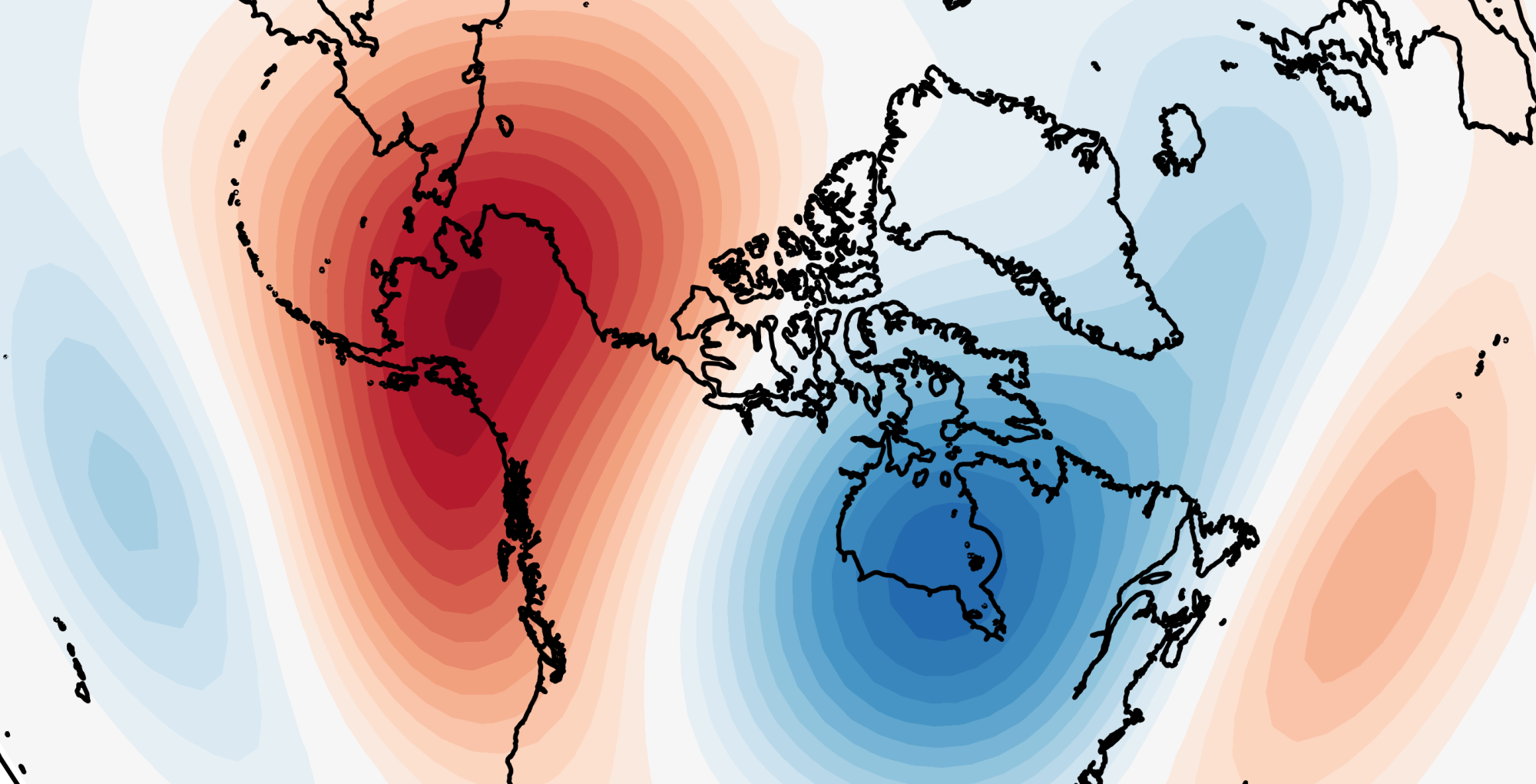I study the stratosphere, the layer of atmosphere above the troposphere that extends from about 10-50 km above the surface. Some people might joke (I hope) that “nobody cares about the stratosphere“, primarily because, unlike the troposphere, it contains no ‘weather’ in the traditional sense. Being very dry (…literally), it can’t be seen on visible satellite imagery — unlike the beautiful weather systems that typify ‘weather’. To visualise the stratosphere, we rely primarily on computer-generated graphics – and it’s not like you can walk outside and experience it, either. So, why do we care?
Weather forecasts often explain that the large-scale weather pattern is “all down to the position of the jet stream” (the band of fast flowing air high in the troposphere that forms on the boundary between warmer and cooler air masses). Now, that’s almost always true in somewhere like the UK, but it’s particularly potent in winter – when the temperature contrasts either side of the jet become enhanced thanks to the polar night. One of the main driving factors behind the speed and position of the jet stream (particularly the Atlantic jet stream) in winter is… the stratosphere!
Rather like the jet streams we know and love/loathe in the troposphere that guide the development and evolution of weather systems, in the stratosphere there exists another jet stream – the polar night jet (Figure 1). This encircles the stratospheric polar vortex (SPV). Both of these form as the pole tilts away from the Sun in winter, leading to intense cooling. The strong temperature gradient then forms a jet stream and cyclonic vortex, which isolates the air within the vortex, and it cools further… and so on. The polar vortex is a normal phenomenon which forms each winter — nothing sensational like some headlines suggest.

Through a process known as stratosphere-troposphere coupling, the stratosphere and the troposphere beneath can ‘talk’ via the influence of planetary/Rossby waves. These very large waves in the mid-latitude westerly flow can propagate vertically from the troposphere into the stratosphere and influence the circulation there – a process known as wave-mean flow interaction. Sometimes, this is strong enough to strongly disrupt the vortex, and when that happens, the isolated reservoir of cold air is broken down and the temperature sky-rockets… by as much as 50C in only a few days. This is known as a Sudden Stratospheric Warming (SSW). Very strong SSWs — major SSWs — occur in approximately six winters per decade, and result in a reversal of the polar night jet to easterlies. The polar vortex is either displaced, split up, or destroyed. An animation of the impressive SSW which took place during February 2018 is shown in Figure 2.

SSWs, and stratospheric vortex variability more generally, have implications for the weather we experience, because anomalies in the strength and position of the polar vortex can propagate downwards and influence the tropospheric jet stream. A stronger-than-normal vortex is associated with a poleward-shifted tropospheric jet stream. For somewhere like the UK, that means Atlantic westerlies and generally mild winter weather. In contrast, following a major SSW, the easterlies propagate downwards (Figures 3 and 4) — resulting in a reduction in strength of the Atlantic westerlies and an equatorward shift of the jet. Sometimes, there can be a complete reversal of circulation — this happened in March 2018 with the infamous Beast from the East, bringing cold and snowy weather. In broad terms, the inverse is true when the vortex is unusually strong, such as during December 2015 which saw an extremely mild and wet period of weather in the UK and NW Europe.

Thus, being able to predict the state of the stratospheric polar vortex is a source of skill for wintertime forecasts. Anomalies in the lower stratosphere tend to persist for several weeks, which biases the troposphere towards certain weather patterns and effectively adds a constraint to the system — once an SSW has occurred, for example, another one cannot occur for ~2 months: the vortex will remain weak and has to re-develop, so the uncertainty is vastly reduced.

And that is why we care about the stratosphere!
Updated 26 September 2022.
Further reading:
Kidston et al., 2015: Stratospheric influence on tropospheric jet streams, storm tracks and surface weather. Nature Geoscience, 8, 433-440.

Very interesting indeed thanks Simon, it really makes last winters bitterly cold BFTE a lot easier to understand.
I’ve recently completed the Learn About Weather course which was a real eye-opener and so enjoyable, but reading this tonight is amazing! Very many thanks indeed.
Very
You’re welcome, Sue – I’m gad you got something out of it, and have been enjoying the Learn About the Weather course.
Total weather novice here, but been watching our weather with interest/concern this year, in particular the low rainfall which worries me somewhat. Is this due to in part the major SSW, are the repercussions still being felt? Will they disappear in time and normal service resumes?
It’s possible this year’s SSW has influenced the pattern since then by changing the sea surface temperatures across the North Atlantic. However, I would expect this influence to decay going forwards through winter as “external” drivers become more significant.